 |
||
|
HOME
|
US Navy -
ships
|
US Navy - air
units
|
USMC - air
units
|
International
Navies
|
Weapon Systems
|
Special Reports |
||
|
Royal Canadian Navy - Marine Royale
Canadienne - Frigate FFH 339 HMCS Charlottetown |
||
|
||
| 01/22 | ||
|
Type,
class: Halifax class Helicopter Frigate / FFH Builder: Saint John Shipbuilding, Saint John, New Brunswick, Canada STATUS: Laid down: December 18, 1993 Launched: October 1, 1994 Commissioned: September 9, 1995 IN SERVICE Homeport: CFB Halifax, Nova Scotia Namesake: City of Charlottetown, Prince Edward Island Ship's Motto: ALL CHALLENGES SQUARELY MET Technical Data: see INFO > Halifax class Frigate |
||
| images | ||
                 Thales SMART-S Mk.2 3D surveillance radar Halifax class Modernization / Frigate Life Extension (HCM/FELEX) > April 2013 - April 2014   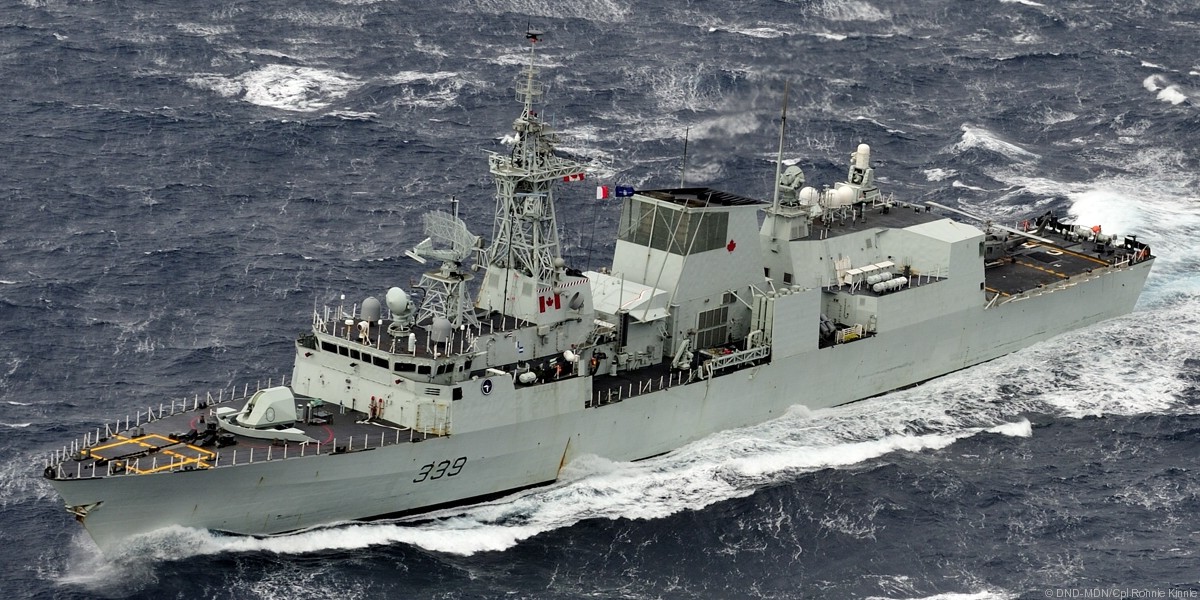        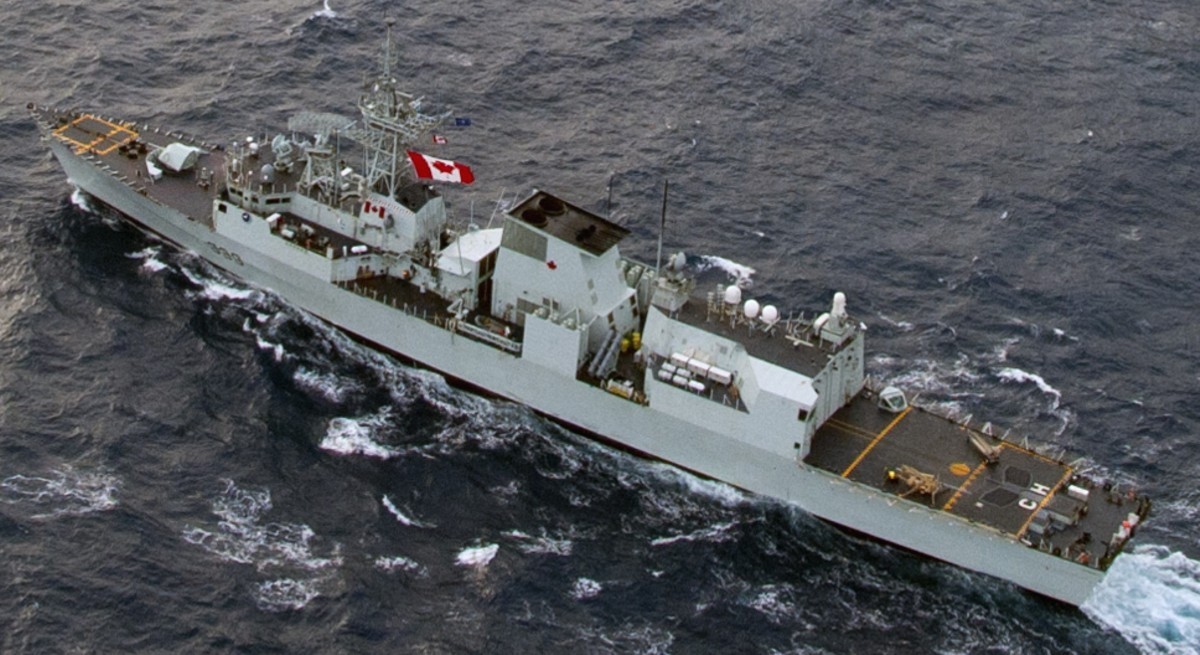  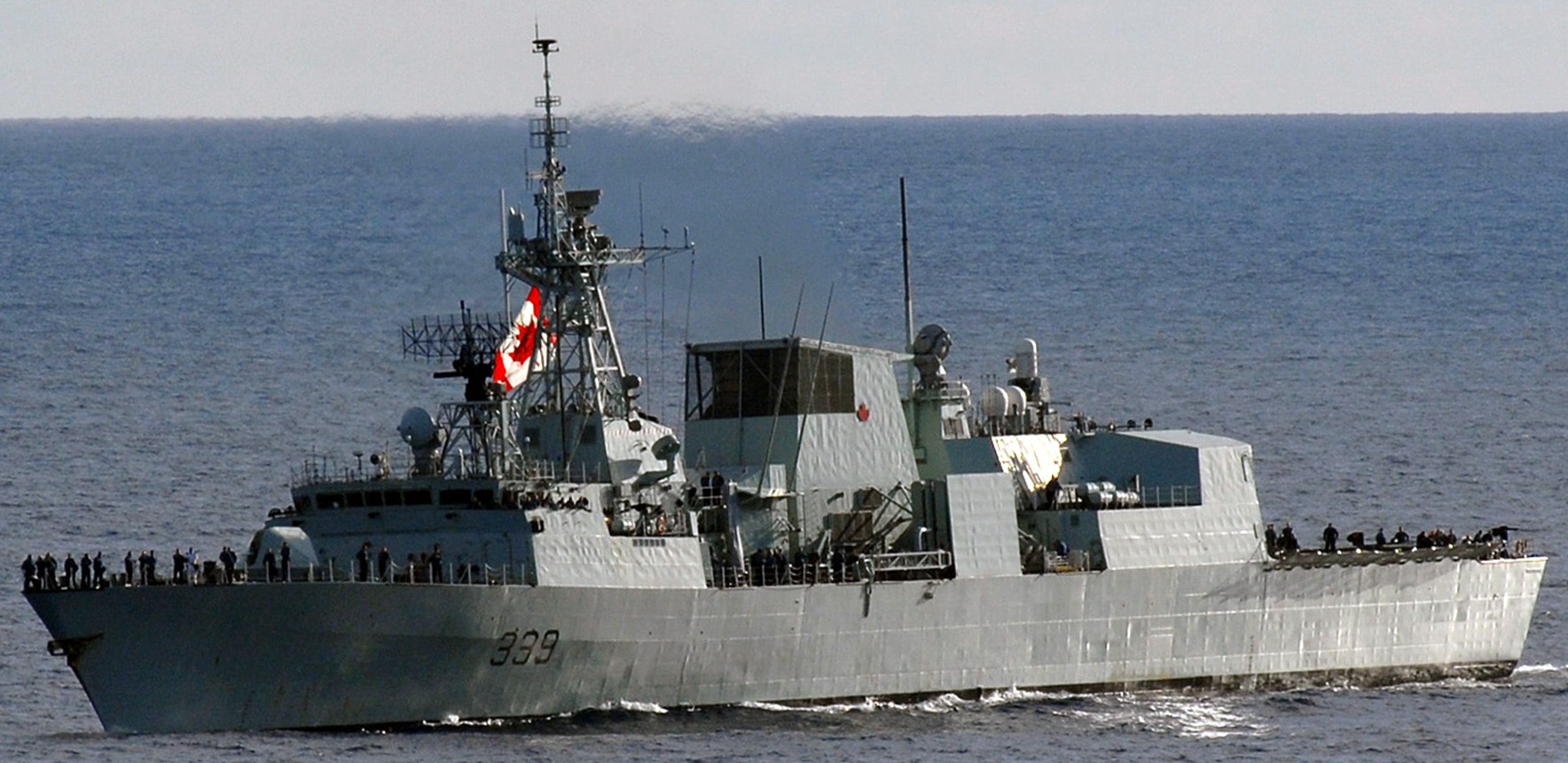   Bofors Mk.3 57mm gun 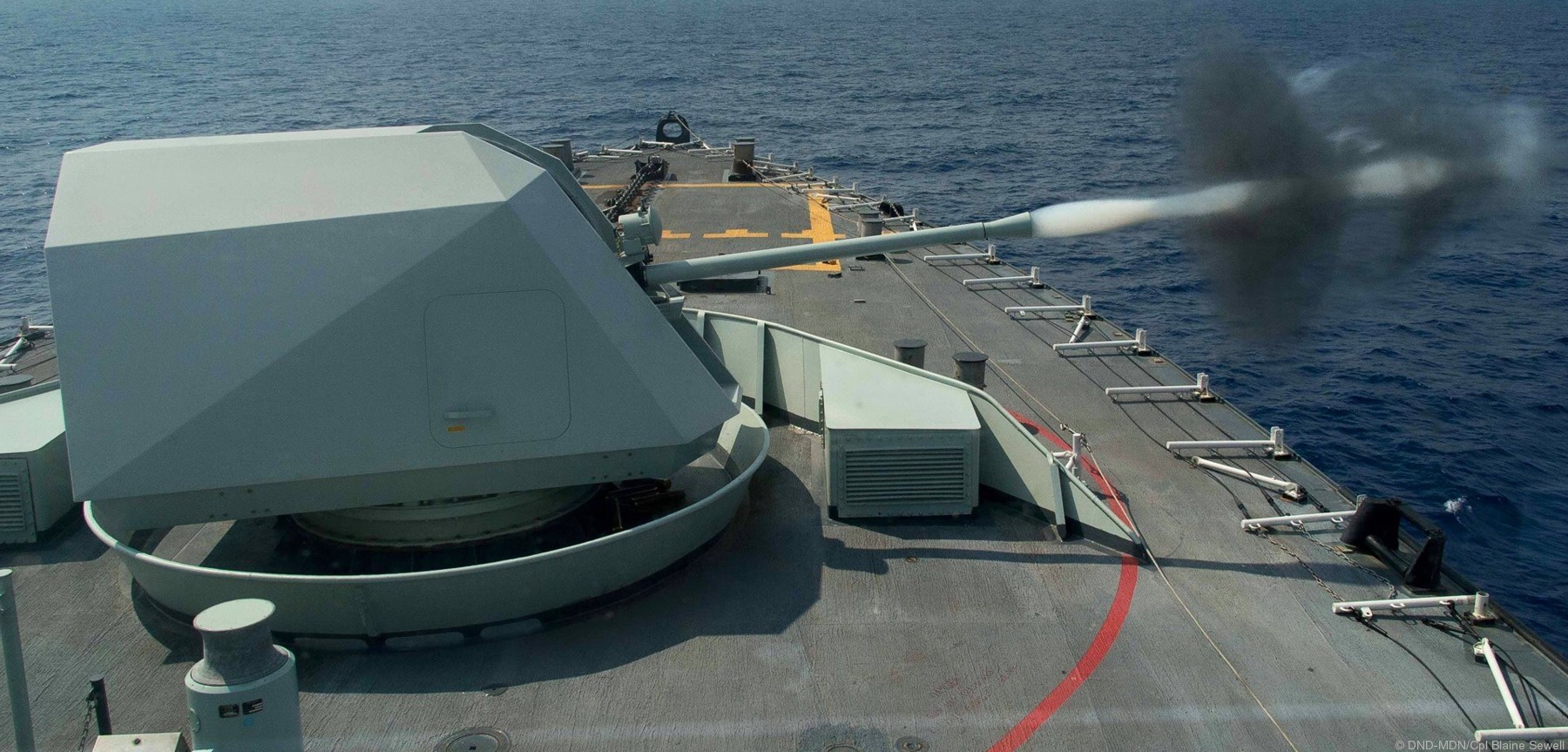    a RIM-162 ESSM missile was fired from the Mk.48 Mod.0 VLS 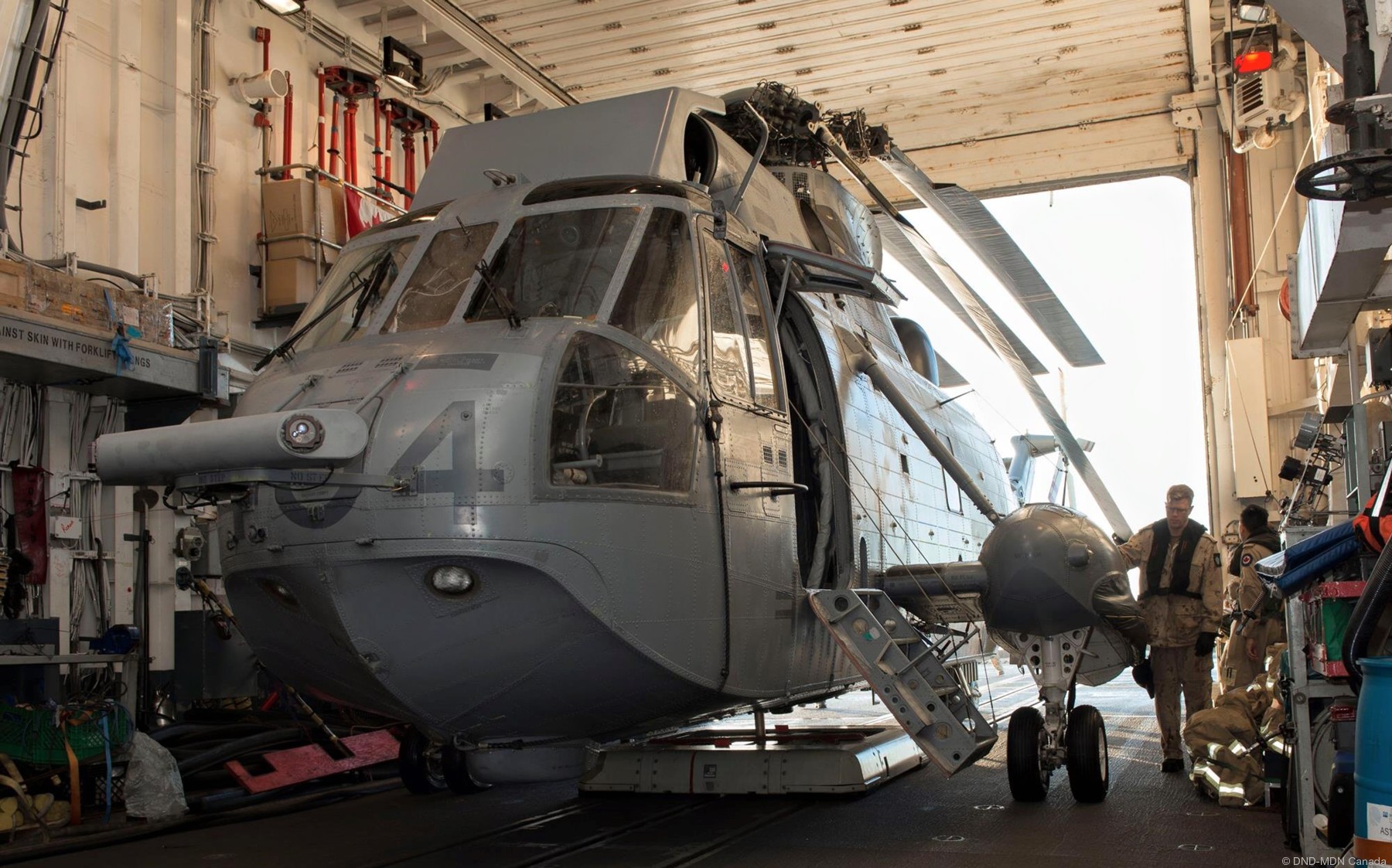 Sikorsky CH-124 Sea King in the hangar  a Mk.46 torpedo is being prepared for loading onto a helicopter |
||
|
HMCS Charlottetown (FFH 339): Charlottetown's keel was laid down on 18 December 1993 by Saint John Shipbuilding Ltd. at Saint John, New Brunswick. The vessel was launched on 1 October 1994 and commissioned into the Canadian Forces on 9 September 1995 at Charlottetown, carrying the hull classification symbol FFH 339. In 1996, the frigate sailed to join NATO's Standing Naval Force Atlantic (STANAVFORLANT) and performed a series of naval exercises with Eastern European nations. In 1997, after becoming the first Canadian warship to pass beneath the Confederation Bridge, the vessel participated in US naval exercises. In 1998, Charlottetown performed another stint with STANAVFORLANT beginning in February, replacing sister ship Toronto. In January 2001, Charlottetown sailed to the Persian Gulf to join the USS Harry S. Truman Carrier Battle Group, enforcing sanctions against Iraq. Following Canada's entry into the War in Afghanistan, Charlottetown was part of the initial naval task force sent to the Arabian Sea. Composed of Iroquois, Charlottetown and Preserver, the task force sailed from Halifax, Nova Scotia on 17 October 2001 arrived in theatre on 20 November. Charlottetown was incorporated into a US amphibious ready group escorting United States Marine Corps troop transports near Pakistan. Charlottetown returned to Halifax on 27 April 2002. In 2008 the frigate made significant narcotics interceptions. A dhow was caught loaded with four tonnes of hashish, close to Pakistani waters. The impounded vessel and crew were handed over to the Pakistan Coast Guard. Mediterranean deployments: On 2 March 2011, Charlottetown left its home port of Halifax to join the NATO-led air-sea Operation Unified Protector during the 2011 Libyan civil war. Charlottetown worked in conjunction with an American carrier battle group led by the aircraft carrier USS Enterprise. The stated mission was to help restore peace, evacuate Canadian citizens in Libya and provide humanitarian relief. On 18 March the Canadian government expanded the mission by announcing that HMCS Charlottetown, in addition to six CF-18 fighter aircraft and two CC-177 transport aircraft, would constitute Canada's contribution to the enforcement of United Nations Security Council Resolution 1973, aimed to protect Libya's civilian population (Operation Mobile). By 21 March, the Canadian Broadcasting Corporation reported that Charlottetown was patrolling the waters off north Libya. On 12 May, the frigate engaged several small boats involved in an attack on the port city of Misrata. Later that month on 30 May, the frigate came under fire from a dozen BM-21 rockets while patrolling off the Libyan coast, but no damage or injuries were reported. In July 2011, HMCS Vancouver relieved Charlottetown, which returned to Halifax. Charlottetown departed Halifax on 8 January 2012 to join the NATO-led mission Operation Active Endeavor. The mission was an anti-terrorism deployment to the Mediterranean Sea. At the time of departure Commander Wade Carter said to the media that there were no plans for Charlottetown to intervene in the conflict in Syria. The frigate was sent to relieve HMCS Vancouver. Maritime security operations: Charlottetown transited the Suez Canal on 23 April 2012 to join Combined Task Force 150, conducting counter-terrorism operations in the Arabian Sea. She returned to Halifax on 11 September 2012. While on deployment, Charlottetown was the test ship for the unmanned aerial vehicle Boeing Insitu ScanEagle. During her service in the Arabian Sea one of the ScanEagle UAVs, which had been deployed from the ship, was lost due to engine failure. The navy later denied that it had been found by Iran, which had captured a ScanEagle drone around the same time. The vessel completed the FELEX modernisation in June 2014. On 27 June 2016 Charlottetown sailed from Halifax to join NATO's Operation Reassurance in the Mediterranean Sea. While deployed overseas, twenty members of the crew contracted hand, foot, and mouth disease. In October, Charlottetown took part in the multinational naval exercise Joint Warrior off the coast of Scotland. The vessel returned to Canada on 13 January 2017 and conducted a full crew change. Charlottetown re-deployed to Europe on 8 August 2017, relieving sister ship HMCS St. John's. Charlottetown joined Standing NATO Maritime Group One (SNMG1) in support of Operation Reassurance. During the deployment, Charlottetown patrolled the Baltic Sea in August taking part in exercise Northern Coast, on completion she transited south taking part in the NATO naval exercise Brilliant Mariner in the Mediterranean Sea in September-October. Charlottletown returned to Halifax on 19 January 2018, having visited eleven ports during the deployment. In August, Charlottetown and HMCS Kingston departed Halifax to take part in Operation Nanook, travelling to Iqaluit, Nunavut and Nuuk, Greenland. source: wikipedia |
||
| patches + more | ||
 
 |
||
|
|
seaforces.org
|
Royal
Canadian Navy start page
| |